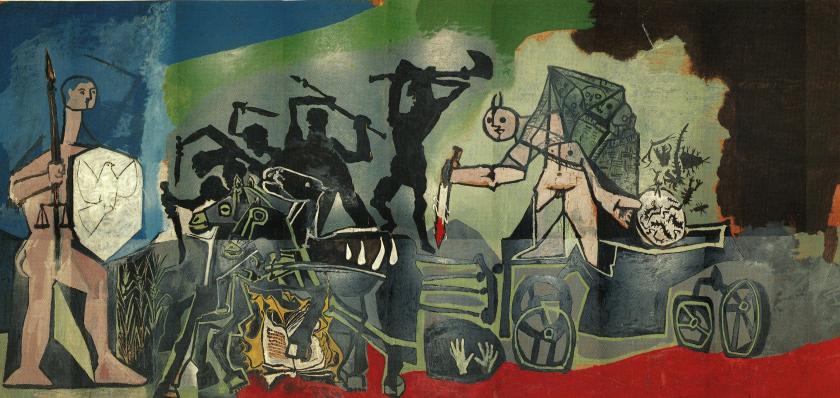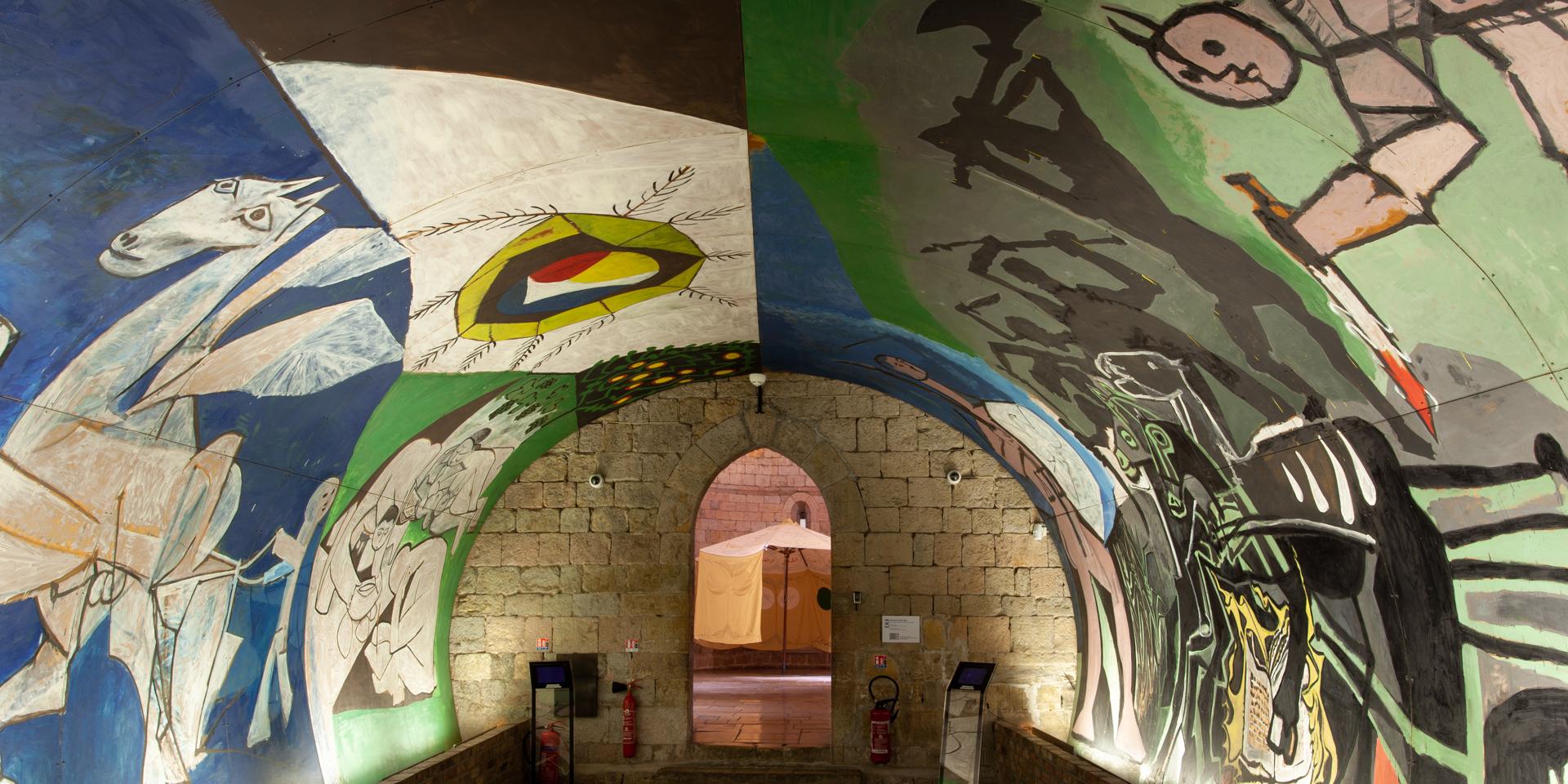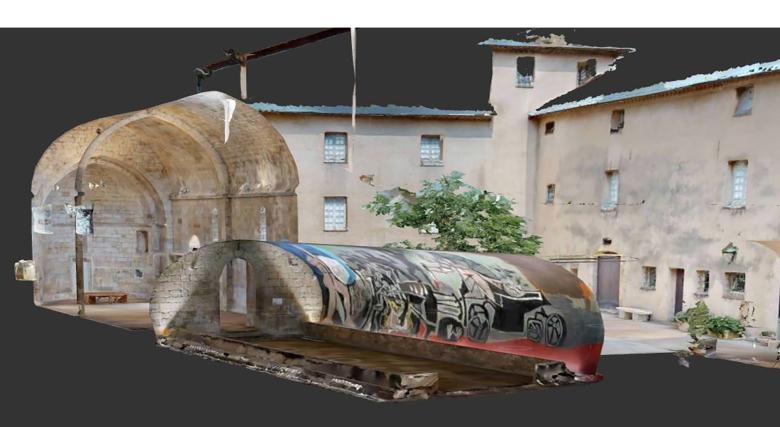The restoration of La Guerre et la Paix was carried out on site in Vallauris during the first quarter of 1998, under the supervision of the Museums of France Restoration Department. The analyses were carried out by the Museums of France laboratory in Paris and by the National Centre for the Evaluation of Photoprotection in Clermont-Ferrand.

Pablo Picasso, La Guerre, 1952. Huile sur bois, isorel, 4,70 m x 10,20 m. © Vallauris, chapelle, musée national Picasso. © succession Picasso, 2021.
The restoration of War and Peace, study of the work and discovery
The work, painted with a water-based material and not varnished, had not been restored since its creation in 1952. The colours were dirty and the water drips had caused the paint to peel and bleach. The support for the work, 46 panels of isorel on a wooden frame attached to the wall with metal brackets, had also suffered from dampness, causing the panels to swell and fall apart at the base. Dust and rubble had accumulated on the underside of the panels, causing deformation of the curvature.
During dismantling, a charcoal drawing of a human figure was discovered on the old plaster of the wall. The restoration involved the removal of the panels and the creation of counter-forms that respected the curvature of each panel. The panels were moved without changing their curvature and then placed on cradles that also had the same shape. The cleaning consisted, depending on the area, of washing or scrubbing, then re-fixing the broken parts, and reconstituting the few small gaps. This cleaning allowed the colours to be refreshed and the matte and shine to be brought back to life. The panels were then reassembled on the old structure, which is in excellent condition, with the help of counter-forms. The charcoal drawing was refixed and photographed, and was covered during the reassembly.
Restoration, preventive conservation and respect for the site
The restoration was undertaken following major renovation work on the chapel, aimed at eliminating the external causes of humidity. This work was continued during the removal of the panels by stripping the vault to restore the initial ventilation capacity, which guarantees the good conservation of the wooden structures. The museography was reviewed with the discretion required to respect the conditions of presentation of the work intended by Picasso and the sobriety of a 12th century architecture. The lighting of the work in particular has been redesigned.
The spectacular restoration of this work was carried out by the restoration service of the Museums of France, including Gilles Barabant, a researcher in the restoration service of the Museums of France, in collaboration with Daniel Jaunard, Patrick Mandon and Jean Perfettini, cabinetmakers, Nathalie and Aloÿs de Becdelièvre, restorers of the pictorial layer, and Florence Cremer, a mural restorer.


